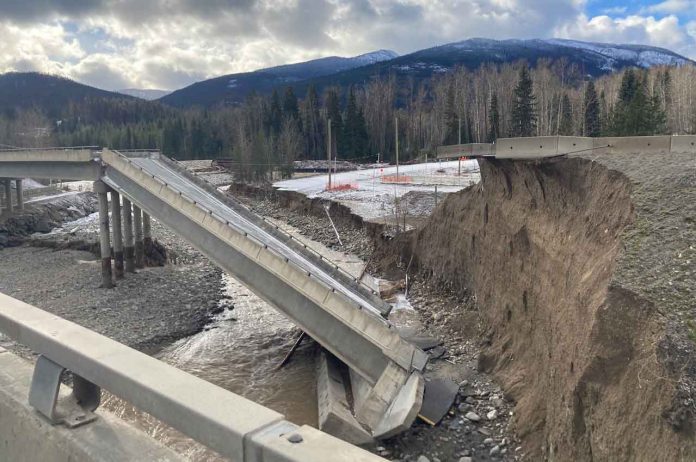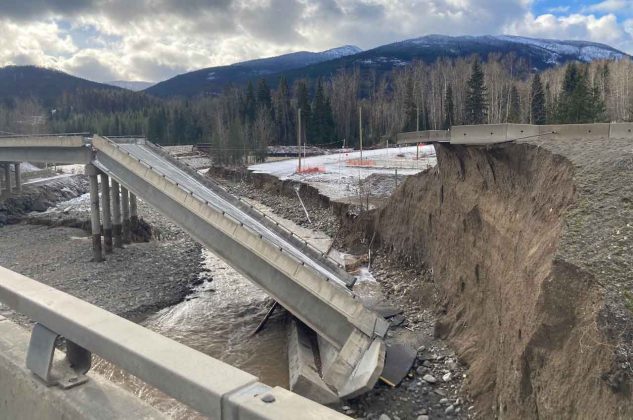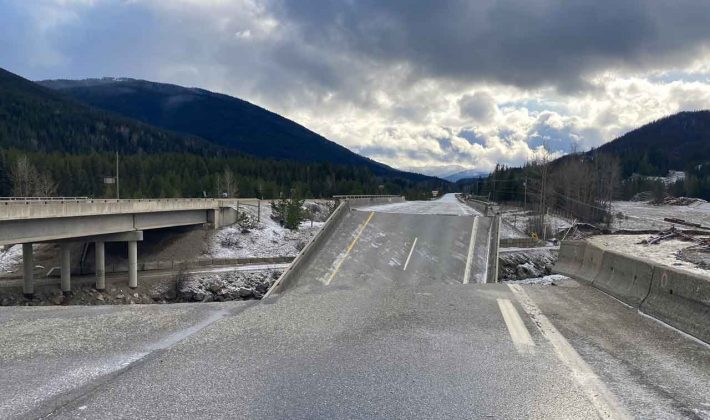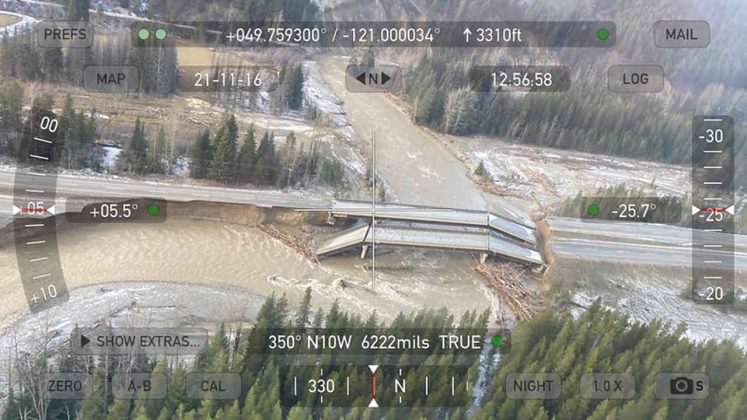Thunder Bay – Infrastructure – The massive flooding and resulting road damage in British Columbia isn’t going to be an easy fix.
The raging flood waters that have washed away highways and rail lines can’t just be fixed by dumping gravel and re-paving or laying down new track, there is going to be needed engineering work to determine what damage and what repairs will be needed.
That work will take some time.
For the Port of Thunder Bay, Chris Heikkinen says, “We don’t envision a significant immediate impact at the Port of Thunder Bay, with the shipping season coming to a close in 6 weeks.
“This year’s Prairie Crop is much smaller than that of recent years, and grain shipments through both Thunder Bay and Vancouver since July are down 30% from last year,” shares Heikkinen. “Given the lower crop yield, there isn’t as large a backlog of grain as in previous years”.
Heikkinen adds, “Both national railways serving Vancouver have been shut down, but it is still too early to tell how much rail damage there is, and how long the rail disruptions could last”.
“The Seaway route through Thunder Bay is a reliable alternative for Western Canadian exports and has the capacity to handle increased volumes of grain. For example, in 2020 Thunder Bay elevators handled a significant increase in grain shipments in the midst of a record harvest and global stockpiling caused by the pandemic. Grain shipments at the Port are 27% higher on average since removal of the Wheat Board Monopoly in 2012, says Heikkinen.
What likely will be immediate for the Port of Vancouver will be delays in transporting goods out of the port, which are dependent on either rail or truck transport to inland markets.
Port operations update #2 – The Vancouver gateway is experiencing significantly disrupted rail and truck movement due to widespread flooding. Despite these impacts, marine terminals at the port are still operating. https://t.co/G8xbvSZGkK pic.twitter.com/l89McOPgji
— Port of Vancouver (@PortVancouver) November 17, 2021
The impact of the washouts and flooding on CP Rail lines is going to take time to evaluate.
Salem Woodrow, a CP spokeswoman says, “CP’s tracks between Spence’s Bridge and Falls Creek are blocked due to damage in several sections. The washouts have severed halted freight on CP’s busiest rail corridor, linking the port and overseas ports with shippers of grain, consumer goods and other products”.
“There is no time estimate for when service will resume,” states Ms. Woodrow.
Passenger Rail service is impacted. VIA Rail states, “Our first thoughts of course are for the people of British Columbia who are living through this disaster. We send them all our strength and support”.
“In terms of our service, as you know the heavy rains and mudslides have led to track closures in Southern B.C., and that has forced the cancellation of VIA Rail train #2 which was supposed to depart Vancouver Monday, November 15, 2021. Passengers who had booked on this train, were offered a full refund, or an opportunity to rebook at a later date with no extra charges.
VIA Train #1 from Toronto to Vancouver has been stopped in Winnipeg.
“Passengers who were planning to board in Winnipeg were offered a full refund, or an opportunity to rebook at a later date with no extra charges. Passengers already on board were offered alternate transportation either by bus (in cases where the roads are passable) or by plane, to their final destinations”, according to VIA Rail.
Via says, “At this time, due to the ongoing severe weather conditions, the infrastructure owner is not able to provide VIA Rail with an estimate on when the tracks will be cleared and trains can begin operating again”.
The Province of British Columbia has declared a state of emergency, and there is federal help ongoing.




